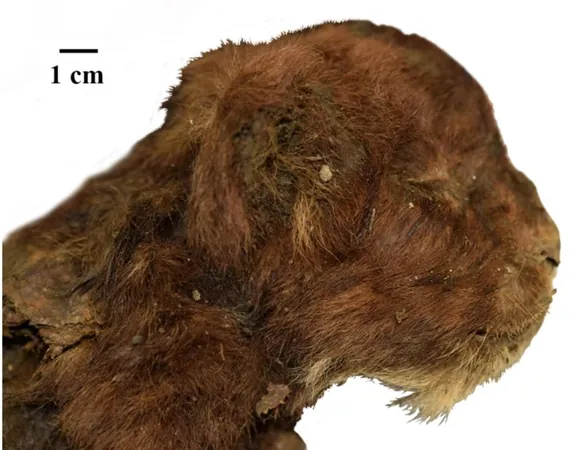
Shocking Discovery: Compound Weather Events Amplify Methane Emissions from Wetlands!
2024-11-20
Author: Benjamin
Introduction
Climate change, driven by human activities, is accelerating the occurrence of extreme weather patterns. Heat waves, prolonged droughts, and intense rainfall are becoming more frequent and severe, all of which have dire implications for ecosystems worldwide. A prime example includes the devastating European heat wave of 2003, which marked one of the hottest summers the continent has experienced in centuries. This extreme event led to significant die-offs of Sphagnum moss in alpine bogs, which took an agonizing four years to recover from the devastation.
Impact of Extreme Heat on Ecosystems
As our planet's ecosystems are pushed to their limits, the biochemical exchange between land, water, and atmosphere undergoes critical changes. Under extreme heat, plants often close their stomata—tiny openings used for carbon absorption—to prevent water loss, leading to an increase in atmospheric carbon. This creates a feedback loop that exacerbates global warming.
Role of Wetlands in Methane Emissions
Wetlands, which are crucial ecosystems where organic materials are decomposed underwater by microbes, serve as the largest natural source of methane emissions—a potent greenhouse gas. A recent study conducted by T. J. R. Lippmann and colleagues has unveiled startling insights regarding how extreme climate events influence methane emissions from wetlands. The research, which examined data from 45 flux tower sites across the globe, was published in the reputable journal Global Biogeochemical Cycles.
Research Findings
The researchers analyzed climate data from January 1982 to December 2020, pinpointing various extreme weather events such as heat waves and droughts. They categorized these events into discrete extremes (like isolated heat waves) and compound extremes (where multiple factors, such as both heat and drought, occur simultaneously).
Their groundbreaking findings suggest that compound extreme events—specifically those characterized by simultaneous heat and dryness—are significantly more impactful on methane emissions compared to discrete events. Strikingly, these combined hot-and-dry conditions led to the highest spikes in methane emissions. Conversely, prolonged droughts, occurring independently, resulted in decreased methane emission levels over time.
Surprising Results and Implications
Interestingly, heavy rainfall alone did not yield the anticipated changes in emissions, which challenges previous assumptions about microbial methane production that relies on soil saturation. The impact of extreme climatic events varied greatly across seasons and wetland types, with marsh and upland environments emerging as particularly sensitive to these fluctuations.
Long-Term Effects of Extreme Weather
Even more alarming, the study finds that the influence of extreme weather can linger in ecosystems for at least one year after these events conclude. With climate change on a relentless trajectory towards increasing temperatures and fewer cold spells, it's predicted that wetland methane emissions could rise dramatically in response to these changes.
Conclusion and Future Research
As we grapple with the repercussions of climate change, experts warn that the intersection of extreme weather and its effects on methane emissions will become a crucial area of research—one that could have significant implications for our understanding of climate dynamics. Are we prepared to face the methane monster lurking beneath our wetlands? Only time—and further research—will tell!









 Brasil (PT)
Brasil (PT)
 Canada (EN)
Canada (EN)
 Chile (ES)
Chile (ES)
 España (ES)
España (ES)
 France (FR)
France (FR)
 Hong Kong (EN)
Hong Kong (EN)
 Italia (IT)
Italia (IT)
 日本 (JA)
日本 (JA)
 Magyarország (HU)
Magyarország (HU)
 Norge (NO)
Norge (NO)
 Polska (PL)
Polska (PL)
 Schweiz (DE)
Schweiz (DE)
 Singapore (EN)
Singapore (EN)
 Sverige (SV)
Sverige (SV)
 Suomi (FI)
Suomi (FI)
 Türkiye (TR)
Türkiye (TR)